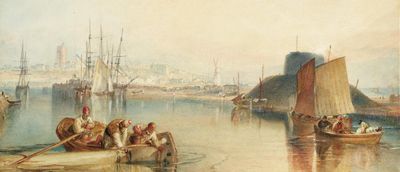Louis Roderer 'Collection 244' Brut NV Champagne
Louis Roderer 'Collection 244' Brut NV Champagne
"The first impression is as invigorating as a sea breeze. I love the interplay of mirabelle, grapefruit and lychee fruit with minty freshness and waxiness from lees contact. And all this is welded to a beautifully proportioned palate with plenty of structure, the acidity bright and the mousse animating. Very salty finish that pulls you back for more. A cuvee of 41% chardonnay, 33% pinot noir and 26% pinot meunier. Of these, 15% fermented in oak and 85% in stainless steel. The final blend contained 36% reserve perpetual and 10% reserve wines of the 2012 - 2018 vintage from oak. The dosage is 7 g/l. Drink or hold. 94 points" jamessuckling.com
Founded in 1776, Roederer became one of the great names of Champagne under Louis Roederer, who inherited the estate in 1833. Part of his approach was to acquire vineyards in the grands and premiers crus classified villages, at a time when most houses bought in the majority of their grapes. This is why today, Roederer, along with houses like Bollinger, have a relatively high proportion of their vineyards under their own ownership, with a consequent effect on the quality of the raw ingredients - the grapes.
In the last decade, the house has renewed this focus, converting on a massive scale to organic and biodynamic viticulture, using minimal spraying and techniques like horse-drawn ploughing in between vine rows on their 240 hectare estate. Cellar Master Jean-Baptiste Lécaillon is one of the leading lights of modern champagne production. We have certainly noticed the impact on quality, from the Brut up to the sought-after Cristal, created in 1876 for Tsar Alexander II of Russia.
Roederer remains independently owned, with the Rouzaud family firmly in charge. They have also added a list of benchmark estates from around the world to their portfolio, including Domaines Ott in Provence, Ramos Pinto in the Douro and the jewel in the crown, Château Pichon Longueville Comtesse de Lalande in Bordeaux.





